Reconstructing Paleoclimate and Human Behaviour from Marine Mollusc Shells
New study reveals that the limpet Patella depressa, frequently found in sites on the Iberian Atlantic coast during the Mesolithic period, is a high-resolution palaeothermometer, with significant implications for palaeoclimate and archaeological studies
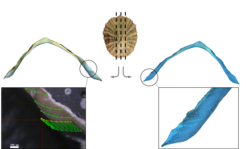
In archaeological contexts, analysis of the stable oxygen isotope ratios (δ18O) in mollusc shells can offer powerful insights into past oceanographic conditions and the coastal resource use of hominin populations. Before performing this analysis, however, researchers must investigate modern specimens to ensure a given mollusk species can be used as an accurate palaeoclimate indicator. Despite Patella depressa being one of the most common mollusc species found in Holocene archaeological assemblages along the Atlantic coast of Europe, this taxon has never been tested as a seawater palaeothermometer.
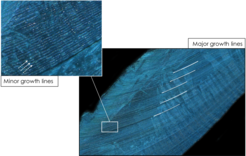
Figure 2: Patella depressa growth patterns were deduced studying minor and major growth lines along shell section.
In a new study published in the journal Palaeogeography, Palaeoclimatology, Palaeoecology, Asier Garcia-Escarzaga, Patrick J. Roberts and Jana Zech of the Max Planck Institute for the Science of Human History, in collaboration with scholars from the University of Cantabria and University of the Basque Country, have explored for the first time the ability of Patella depressa to be used as an environmental recorder.
The researchers’ investigation combined observations of incremental shell growth patterns, much like the patterns of growth seen in tree rings, with stable oxygen isotope values (Fig. 1 and 2). In order to conduct high-resolution oxygen isotope analyses, calcium carbonate micro-samples were taken using a using a Micromill of the MPI-SHH (Fig. 3).
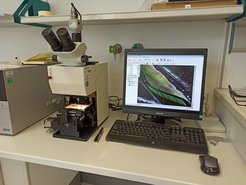
Figure 3: CaCO3 micro-samples for oxygen isotope analyses were taken using a Micromill of the MPI-SHH.
The authors found that reconstructed temperatures based on stable oxygen isotope values from the modern collected shells matched well to measured seawater temperatures taken at the time of collection (Fig. 4) and during the mollusc life span (Fig. 5). This confirmed that stable oxygen isotope analyses of Patella depressa provide a reliable record of climatic conditions during their growth.
This novel investigation establishes a new environmental archive for future palaeoclimate investigation in northern Iberia, but also more widely along the Atlantic coast of Europe. In particular, analysis of this species from archaeological sites should provide important insights into the seasonality of resource collection by past human populations, as well as the marine climates they were forced to contend with.
To learn more about these findings, read the full-text paper here.
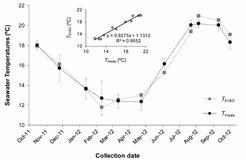
Figure 4: Seawater temperatures estimated from oxygen isotope values exhibited a very high correlation with instrumental seawater temperatures.
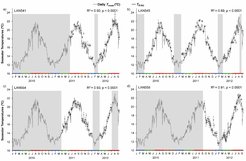
Figure 5: Seawater temperatures estimated from oxygen isotope values exhibited a very high correlation with instrumental seawater temperatures during the mollusc life-span.




